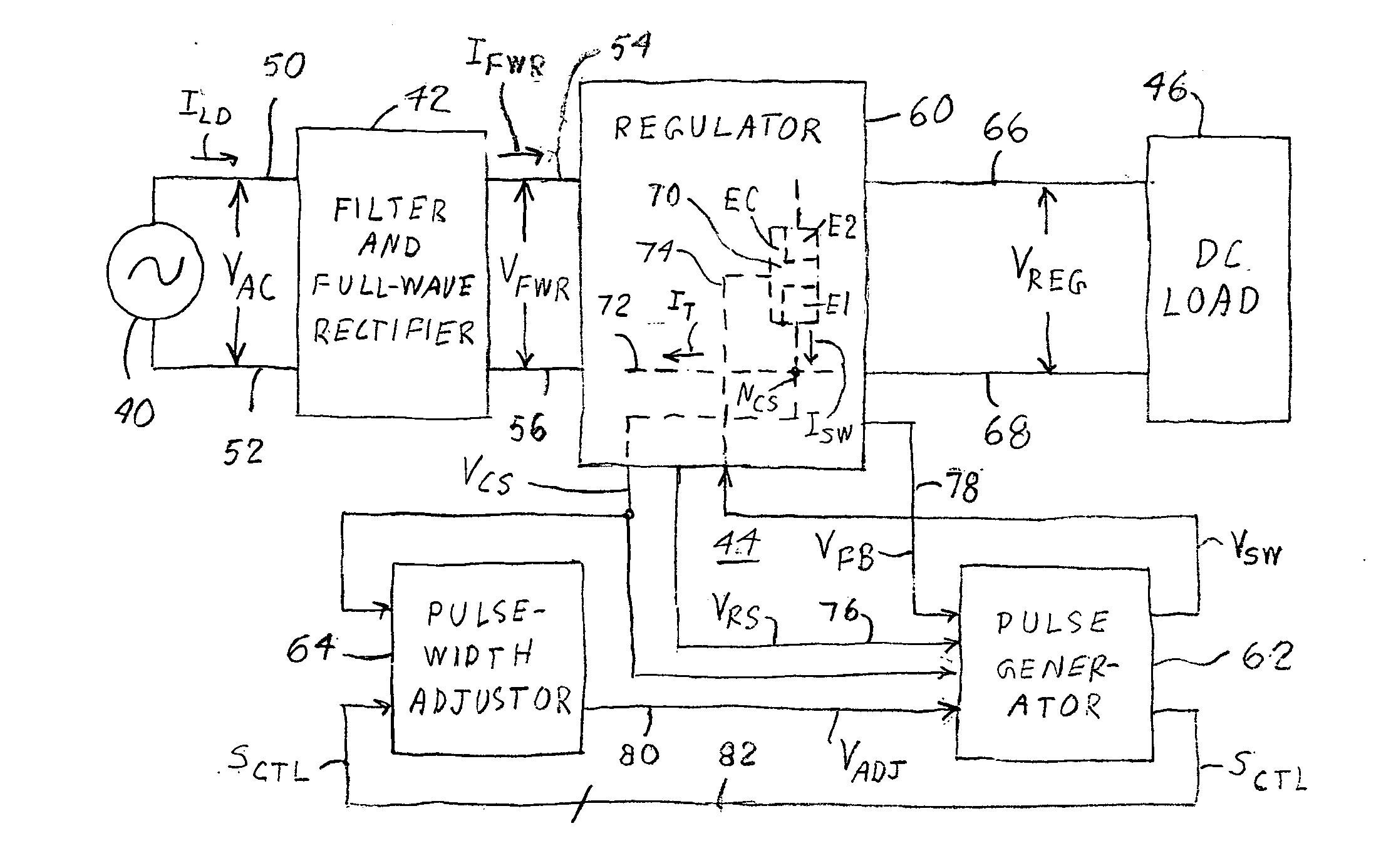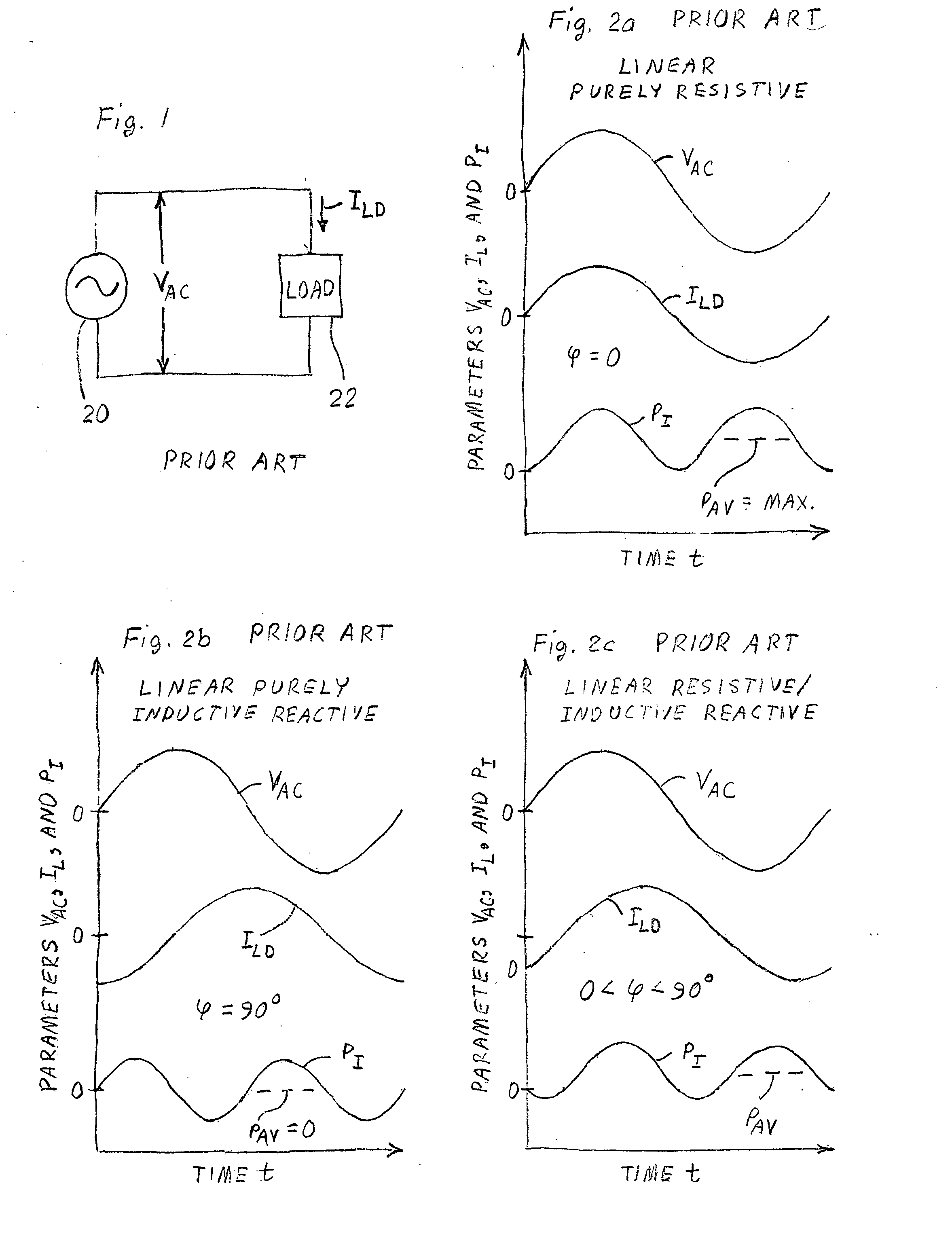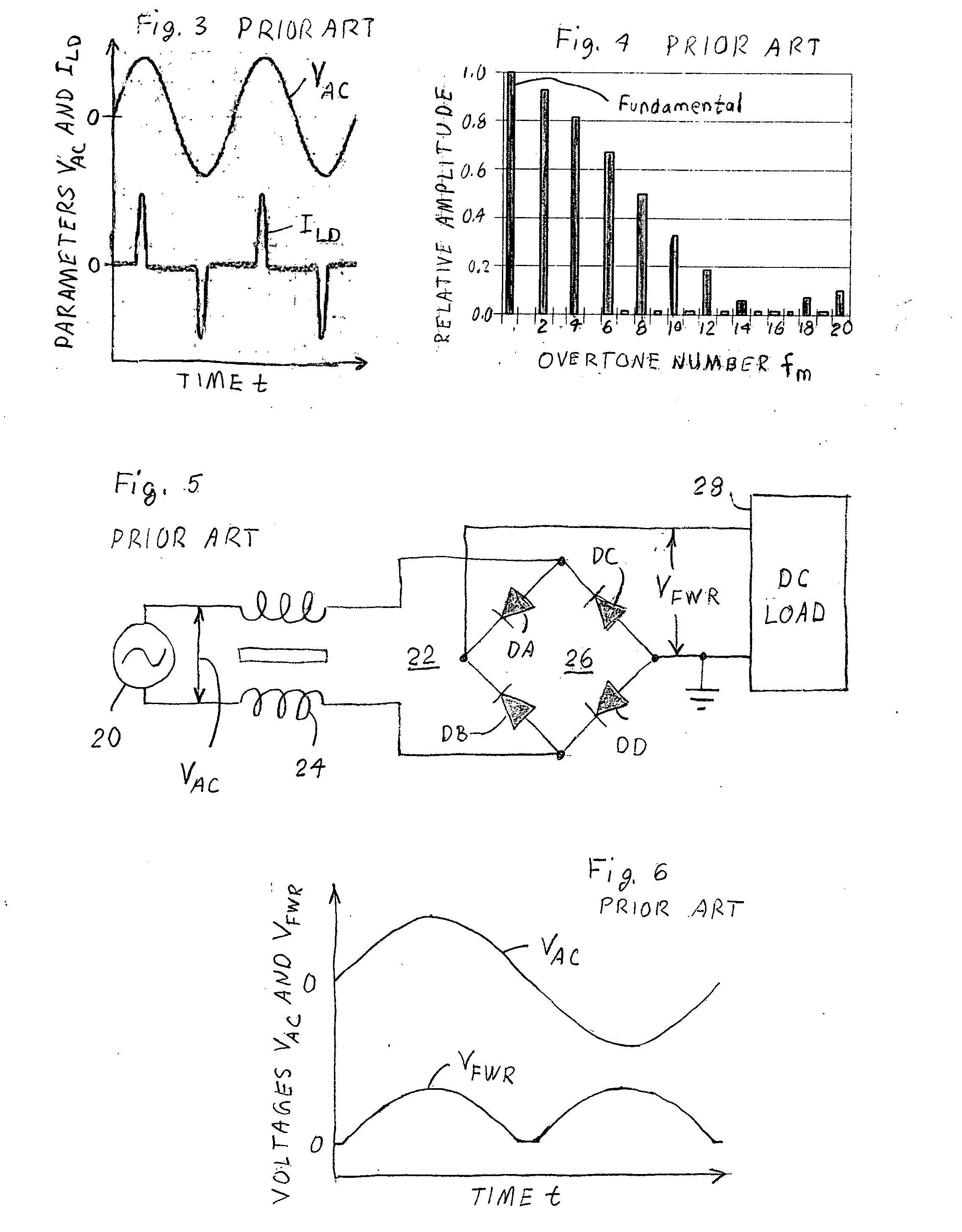Power factor correction by measurement and removal of overtones
a technology of power factor and overtone, applied in the direction of pulse manipulation, pulse technique, instruments, etc., to achieve the effect of reducing the cost of manufacturing and testing operating devices, reducing the sensitivity to operating voltage and current variability, and increasing the flexibility of designing devices
- Summary
- Abstract
- Description
- Claims
- Application Information
AI Technical Summary
Benefits of technology
Problems solved by technology
Method used
Image
Examples
Embodiment Construction
[0043]Referring to FIG. 9, it illustrates a power-supply circuit having which contains power factor correction circuitry configured in accordance with the invention for making overtone power factor PFOvertone and phase-shifted power factor PFPhase simultaneously very close to one. The power-supply circuit in FIG. 9 is formed with an AC power supply 40, a filter and full-wave rectifying circuit 42, regulator / control circuitry 44, and a DC load 46. AC power supply 40 is typically at the location of a power company. Components 42, 44, and 46 are typically at the location of a power consumer. The combination of filter and full-wave rectifier 42 and regulator / control circuitry 44 form a power factor correction circuit.
[0044]AC power supply 40 furnishes analog input AC supply voltage signal VAC at fundamental power supply frequency fAC, typically 60 Hz. AC supply voltage VAC, which varies substantially sinusoidally with time according to Eq. 1, is provided between a pair of main electrica...
PUM
 Login to View More
Login to View More Abstract
Description
Claims
Application Information
 Login to View More
Login to View More - R&D
- Intellectual Property
- Life Sciences
- Materials
- Tech Scout
- Unparalleled Data Quality
- Higher Quality Content
- 60% Fewer Hallucinations
Browse by: Latest US Patents, China's latest patents, Technical Efficacy Thesaurus, Application Domain, Technology Topic, Popular Technical Reports.
© 2025 PatSnap. All rights reserved.Legal|Privacy policy|Modern Slavery Act Transparency Statement|Sitemap|About US| Contact US: help@patsnap.com



